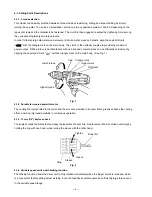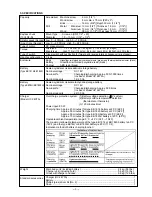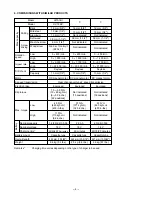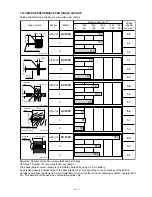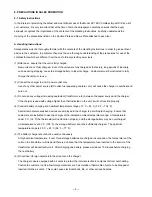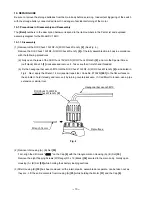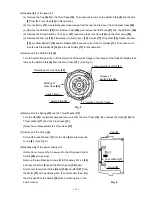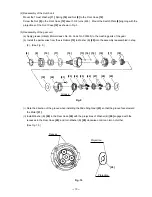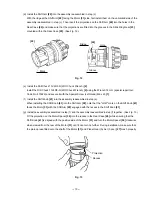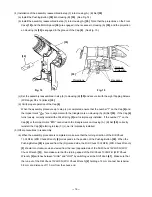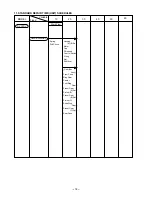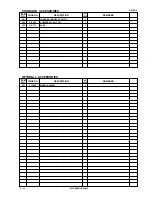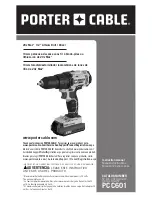
--- 9 ---
(7) Precautions in the use of HSS Drill Bits
Although the Model DV 18DV is designed for drilling capacities of 38 mm (1-1/2") in wood, and 13 mm (1/2")
in aluminum and mild steel, this capability is not as efficient as conventional electric power tools. In particular,
when drilling through aluminum material with a 13 mm (1/2") drill bit, the drill tends to become locked when the
drill bit penetrates through the material. For this reason, the customer should be cautioned to reduce the
thrust on the main body of the drill when drilling completely through the material to avoid locking the tool.
Repeated locking of the drill causes excessive current flow from the batteries which not only decreases the
amount of work possible per charge, but could also result in burning of the motor.
B. Suggestions and precautions for the efficient use of the charger and storage batteries
If any of the storage batteries Types EB 1814, EB 1820, EB 18H and EB 1830H is exposed to direct sunlight
for an extended period or if the temperature of the battery is high immediately after it has been used in the
tool, the pilot lamp (red) may not be turned on when the battery is connected to the charger. Chargeable
temperature ranges of each type of battery are specified as follows.
Types EB 1814 and EB 1820: from -5˚C to 60˚C (from 23˚F to 140˚F)
Types EB 18H and EB 1830H: from 0˚C to 45˚C (from 32˚F to 113˚F)
In such a case, the customer should be advised to place the battery in a shaded area with a good airflow, and
allow sufficient cooling before recharging. This phenomenon is common to all existing batteries that employ a
thermostat. The cooling time required before charging varies from a few minutes to about 30 minutes,
depending on the load, duration of use, and ambient temperature.
9. REFERENCE MATERIALS
9-1. Speed Control Mechanism
Spindle rotation speed of the Model DV 18DV can be
controlled by simply varying the amount by which the
trigger switch is depressed. The relationship between the
amount the trigger switch is depressed (in millimeters) and
the rotation speed is illustrated in Fig. 3.
Note: The gradient and values illustrated in Fig. 3 are
intended for reference only, and will vary slightly
due to differences in the discharge condition of the
battery, the ambient temperature, and individual
speed-control element accuracy.
Fig. 3






